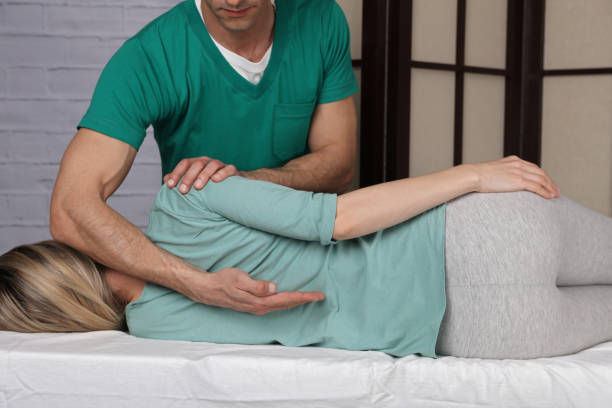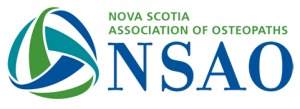Osteopathy is a manual therapy with the goal to restore mobility and proper mechanics to all areas of the body. The osteopath looks at the whole body, assessing front to back and top to bottom to ensure the body works as well as possible. An osteopath can be likened to being a human mechanic.
Osteopathy is based on the following principles:
Structure governs function. The structures, such as bones, ligaments, muscles and fascia must be free to move and not impinge on nerves and blood vessels. Mechanical problems often precede changes in the physiology and chemistry of the body that can cause disease.
The role of the artery is absolute. This includes not only blood flow, but also all the fluids of the body such as lymph and cerebral spinal fluid. These bring nutrition and remove products of inflammation in the tissues and thus are essential to health and healing.
The body is a functional unit. It is important to assess and treat the entire body. For example an old injury to the ankle that remained stiff and not working properly will change the mechanics in the knee and hip and low back and eventually cause wear and tear and dysfunction in these areas. Abdominals scars post surgery can cause the pelvis to be rotated and put strain on the back causing back pain.
The body possesses self-regulatory mechanisms, having the inherent capacity to defend, repair, and remodel itself.
What happens on the first visit?
The initial assessment takes an hour and we ask that you were loose clothing. Clothing may be removed to adequately assess the area in question. You will be asked about your medical history and details of presenting symptoms. then a standard orthopedic and neurological exam is preformed to ensure that osteopathic treatment is appropriate for you. If we feel further medical evaluation is required then we will refer you back to your family MD with a letter of explanation. Osteopathic assessment consists of postural observation, mobility testing and hands on palpation. Treatment will be discussed and started on the first visit.
What does treatment consist of and are there any contradictions?
Numerous techniques are used to restore mobility to spinal and peripheral joints and fascia. Fascia is the connective tissue that surrounds all structures in the body and if compressed can restrict mobility. Spinal mobility can be restored using muscle energy and functional/ ligamentous techniques, thus avoiding thrust manipulation that could compromise the vertebral artery in the neck or weakened spinal joints due to osteoporosis.
Treatment techniques also include:
-
Soft tissue manipulation
-
Osteopathic articular technique
-
Cranial osteopathy and
-
Visceral fascial release techniques.
For an explanation of osteopathic techniques visit www.osteopathyontario.org (Click manual osteopathic techniques in the about osteopathy section.)
Conditions treated:
We treat all ages and many conditions.
We often see patients that have plateaued with other therapies.
This is just a partial list of the more common things that we see.
- Spinal pain
- Other orthopedic conditions such as shoulder bursitis and tendonitis
- Osteoarthritis of the hip and knee
- Headaches and migraines
- Vertigo and dizziness
- Post concussion syndrome
- TMD and facial pain
- Pelvic and abdominal pain (that have been medically investigated).
- Urinary Stress incontinence
- Chronic pain syndromes
- Post MVA and whiplash
- Pre and post partum
- Hiatus hernia and reflux and digestive issues
- Birth trauma and colic
- Recurrent ear infection (otitis media)
Many of the above condition benefit from a multidisciplinary treatment approach and we may recommend concurrent treatment with a physiotherapist or massage therapist to address many muscular skeletal problems.
Should I see a Physiotherapist or an Osteopath first?
If this is an acute (recent problem) or post surgery or a fracture, then seeing a physiotherapist first would be best.
If the problem is more chronic and involves multiple areas or you have plateaued with previous Physiotherapy treatment then seeing an Osteopath is indicated. Whoever you see first in the clinic you will be assessed and referred to see an Osteopath, Physiotherapist or Massage therapist as necessary.
What is the cost of treatment and who pays for it?
Many private health plans cover Osteopathy. They usually cover $300 – $500/calendar year.
We are unable to bill health plans directly for Osteopathy treatment except for DVA and the teachers Bluecross.
A doctors referral is not required for Osteopathy treatment.
NSAO (Manual Practice) Members Statement:
- We are members in good standing of the Nova Scotia Association of Osteopaths (NSAO).
- As members of the NSAO, We are not Osteopathic Physicians, Doctors of Osteopathic Medicine (DO, formerly Doctor of Osteopathy), nor do we practice Osteopathic Medicine.
- In Nova Scotia, Osteopathic Manual Practice is not regulated by the government, however the NSAO is actively seeking government regulation to protect the public and our profession.
Osteopathic Manual Practitioners are not members of the College of Physicians and Surgeons of Nova Scotia.



